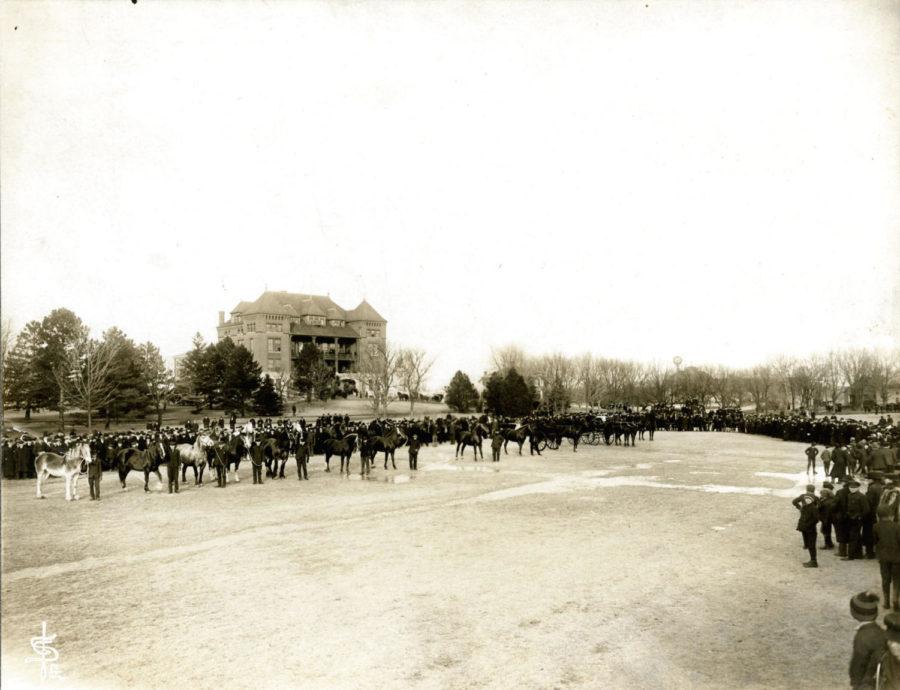Morrill Act leaves long legacy
July 5, 2012
150 years ago, the Morrill Act, signed by President Abraham Lincoln, was passed in Congress. Without this Act, Iowa State University would not be here as we know it. The Morrill Act was signed into law on July 2, 1862.
“The Morrill Act was created to establish a nationwide system of higher education that was publicly funded,” said Jonathan Wickert, dean of the college of engineering. “The objective was to prepare students for the practical world they would face after leaving the classroom. The Morrill Act has literally improved the lives of millions of people.”
Iowa was the first state to accept the Morrill Act, and declared the fledgling Iowa Agricultural College and Model Farm as its land-grant university. This is directly responsible for the large Iowa State you see today.
This summer, Iowa State will participate in the Smithsonian’s
President of Iowa State, Steven Leath said there are differences between land-grant universities and other schools, such as the University of Iowa.
“Land-grant universities have always been much more in tune with the state,” Leath said. “They focus their education and their research programs around helping the state and training their students so they get jobs that contribute back to the state public far more so than the non land grants.”
Wickert also stressed certain aspects of land-grant schools that separate them from other schools.
“The Morrill Act placed an emphasis on practical education in areas important to the economic growth of the states, like agriculture and mechanic arts (which we today call engineering), but not to the exclusion of other disciplines.”
Pamela Riney-Kehrberg, professor and chair of the Department of History said the ISU extension program is an important part of our university’s land-grant mission as it connects the university with people outside of the immediate college community.
“Extension is the connection between the university and the farming communities around the state,” Riney-Kehrberg said. “We have a whole range of curricular programs that you wouldn’t find at many other universities.”
Before the Extension Office, Iowa State used a train car called the Seed Corn Gospel Train, ran by professor Perry Holden, that traveled around the state’s small towns, teaching farmers about hybrid corn.
President Leath describes how running at a land-grant university is different than a standard university.
“Because most of the faculty at land grants understand this culture of being relevant and supportive of the state, in some ways it’s easier [to run a land-grant university.]”
Leath also plans on making changes to Iowa State’s land-grant mission.
“We will become more sensitive to the needs of the state than any other land-grant, so we will build upon the great land-grant tradition and actually strengthen it. You’ll see more public- private partnerships a year and a university very willing to help the state.”
For Leath, however, one issue takes precedent over all others.
“Our most important job is to improve the quality of life for our citizens to help stimulate the economy.”
While many things have changed at Iowa State over the years, the focus on our land-grant mission and heritage has continued.
“The land grant values are very important to Iowa State, and they continue to be the foundation of how our university operates,” Wickert said. “The land grant values were right when the Morrill Act was signed, and they continue to be the right ones.”
“Iowa State is a national leader in that regard, of being a modern land grant school. Our research in biorenewables and plant genetics, and our extension programs for children, healthy living, company assistance, and flood recovery are cases in point.”







